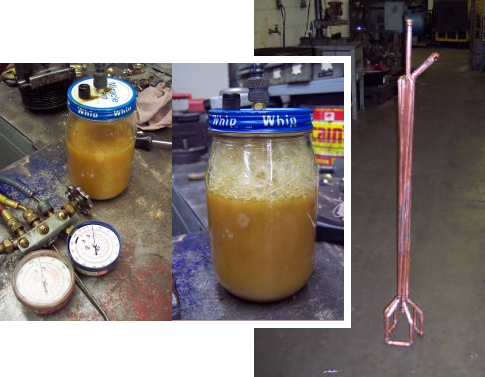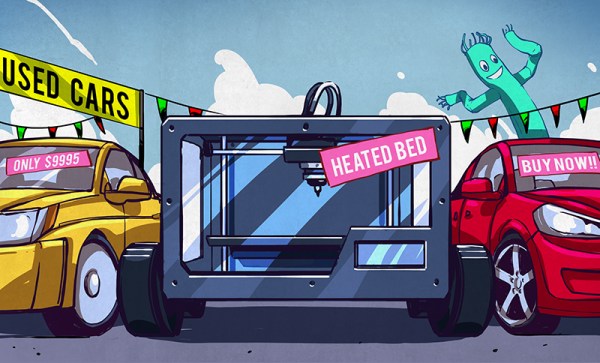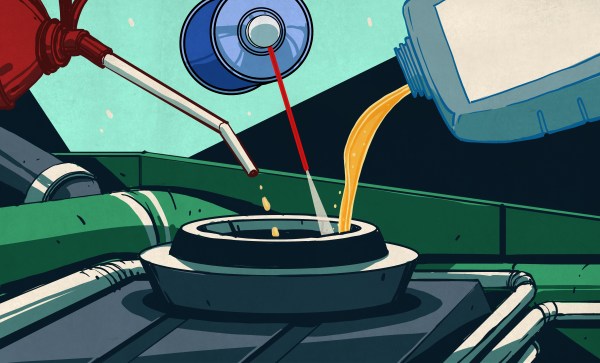On the face of it, keeping fluids contained seems like a simple job. Your fridge alone probably has a dozen or more trivial examples of liquids being successfully kept where they belong, whether it’s the plastic lid on last night’s leftovers or the top on the jug of milk. But deeper down in the bowels of the fridge, like inside the compressor or where the water line for the icemaker is attached, are more complex and interesting mechanisms for keeping fluids contained. That’s the job of seals, the next topic in our series on mechanisms.
grease4 Articles
You Got A 3D Printer, Now What?
Given the incredibly low prices on some of the models currently on the market, it’s more than likely a number of Hackaday readers have come out of the holiday season with a shiny new desktop 3D printer. It’s even possible some of you have already made the realization that 3D printing is a bit harder than you imagined. Sure the newer generation of 3D printers make it easier than ever, but it’s still not the same “click and forget” experience of printing on paper, for instance.
In light of this, I thought it might be nice to start off the new year with some advice for those who’ve suddenly found themselves lost in a forest of PLA. Some of this information may seem obvious to those of us who’ve spent years huddled over a print bed, but as with many technical pursuits, we tend to take for granted the knowledge gained from experience. For my own part, the challenges I faced years ago with my first wooden 3D printer were wholly different than what I imagined. I assumed that the real challenge would be getting the machine assembled and running, but the time it took to build the machine was nothing in comparison to the hours and hours of trial and error it took before I gained the confidence to really utilize the technology.
Of course, everyone’s experience is bound to be different, and we’d love to hear about yours in the comments. Grand successes, crushing defeats, and everything in between. It’s all part of the learning process, and all valuable information for those who are just starting out.
Beyond WD-40: Lubes For The Home Shop
If your shop is anything like mine, you’ve got a large selection of colorful cans claiming to contain the best and absolutely only lubricant you’ll ever need. I’ve been sucked in by the marketing more times than I care to admit, hoping that the next product will really set itself apart from the others and magically unstick all the stuck stuff in my mechanical life. It never happens, though, and in the end I generally find myself reaching for the familiar blue and yellow can of WD-40 for just about every job.
Biodiesel Equipment Hacks

[Oldman] took on a biodiesel project for some friends a few years ago. A fully operational processing rig was never achieved, but he did document some of the successful hacks he came up during the project.
The idea is to reclaim the waste oil from restaurants and burn it in your modified racing motorcycle or other mode of transportation. That makes it sound easy, but have you ever seen what happens to bacon fat after it cools? Granted, we’re talking oil from vegetable sources but the same type of coagulation presents itself. Pumping it through a processing rig becomes especially tough in the winter, and that’s why [Oldman] came up with the heated pump head on the right. It’s got three connections; two are part of a loop of copper tubing, allowing 150 degree water to be circulated to liquefy the grease. The third connection sucks up the melted oil. You also need to regulate the water content of the fuel. The inset images of a salad dressing jar are his test runs with applying vacuum to dehydrate the fuel. He learned that it needs to be heated slightly to reduce foaming. He had planned to scale up this concept to apply vacuum to fuel stored in propane tanks.














